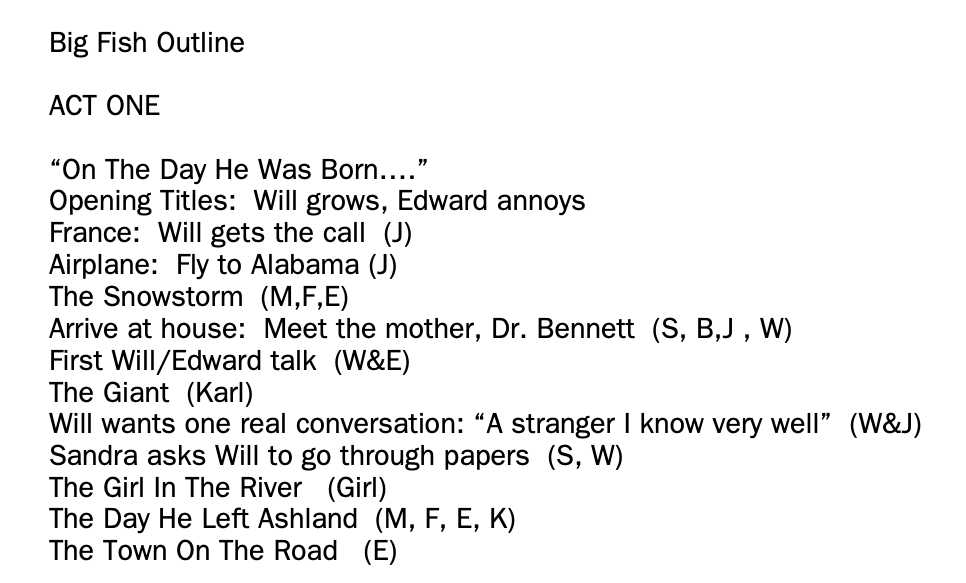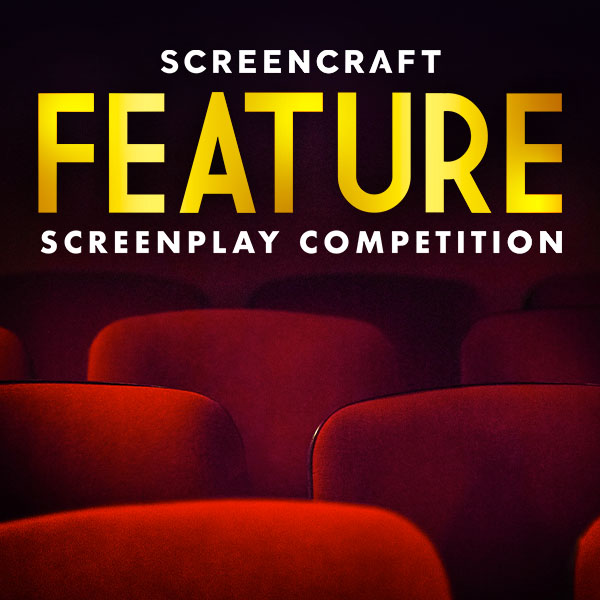To Outline, Or Not to Outline, That Is the Screenwriting Question

Do screenwriters need to embrace the outline, or are they better off not writing one?
Before anyone flips out and lights up the comments section, know that the easy answer to this is that you, the screenwriter, should do what's best for you and your process.
However, there is a caveat to that statement, which we will discuss below. But before we do, let's talk a little bit about what an outline is and how it is used.
What Is a Screenplay Outline?
Outlines are writing tools that allow you to get an overview of the story beats and pacing before applying them into the screenplay format of locations, scene description, and dialogue.
The outline allows the writer to construct a general list of sequential scenes and moments in the order that they will be written within a screenplay. They are usually written in bullet point or numbered fashion, with each entry consisting of a brief description of what is happening in each major scene and story beat.
You — and those you collaborate with — can use this overview to make creative and editorial choices before the time is taken to write those scenes and moments in their cinematic entirety via the screenplay format.
For example, if you find within the outline that certain scenes are redundant, repetitive, or unnecessary, you can move, adjust, or delete those scenes before they are written in their entirety.
Screenwriters that embrace the process of outlining their screenplays (as described above), before they start writing them, utilize outlines to organize their:
- Thoughts
- Visuals
- Scenes
- Sequences
- Twists
- Turns
- Plot points
- Character arcs
- Story arcs
All of which encompass the overall story narrative structure of the screenplay.
You're essentially writing the script in broad strokes without having to fully commit to those elements until you actually start writing the script.
Outlining is a simpler form of the older screenwriting guard that uses index cards, a process that allows writers to write scene breakdowns on individual index cards, which can be placed in a different order (or discarded) to achieve the desired story flow. Index cards are still utilized by professional writers and have also been adapted by up-and-coming screenwriters that have learned the process from their mentors and those they hold high in the screenwriting world.
What Are the Perceived Pros and Cons of Writing Outlines for Spec Scripts?
As most likely know, spec scripts are screenplays written under speculation that they will be bought, produced, and distributed by studios, production companies, networks, streamers, and distributors.
In short, when you're writing a spec script, you're not under contract. You can pretty much write however you want, whenever you want — albeit while hopefully following general industry guidelines and expectations to better your odds of success.
So, when you're writing on spec, the screenwriter camps are usually divided between outliners and non-outliners.
Outliners
Outliners swear by the process of using outlines as a front-end development tool. They trust in the system of going into a screenplay better prepared by having a document that can work as a compass or map.
When you're working from an outline while writing on spec, you're not explicitly married to the order of scenes within, nor are you married to the specific broad strokes you've created. The beauty and benefit of writing on spec are that you answer only one person — yourself.
Non-Outliners
Most non-outliners don't like the thought of being overly analytical. They want to discover their story and characters as they go — much like the freedom most authors enjoy while writing novels.
To non-outliners, knowing the story from Point A to Point Z — and everything in between — halts any creative exploration, possibly leading to a more formulaic screenplay (at least in their eyes).
Who Is Right: Outliners or Non-Outliners?
This is where our first statement above comes into play. When you're writing on spec, it doesn't matter. You should do you. Whatever process works best for you while writing for yourself should be applied.
However, this is where we get into that caveat we mentioned above. If you want to be ready for success, you're going to need to learn how to write like a professional. And when you're a professional screenwriter working under a contracted assignment for a studio, production company, network, or streamer, you're going to need to embrace the outline process because outlines are the required first step within a contract.
Using Outlines While Under a Screenwriting Contract Assignment
Let's get this hard truth out of the way. When you're under contract for an assignment, you are required to write and hand in an outline for approval in 99% of the contracts out there.
In fact, outlines are the first paywall in most professional contracts.
In most cases, you write a logline and synopsis to get the contract — and this also involves some pitching a majority of the time, where you sell your vision for whatever assignment you're being considered for. You do all of this for free, and it's what wins you that assignment.
Then, when you've got the job and signed on the dotted line, you'll be given an agreed-upon commencement fee (a percentage of the overall contract amount). That's paid out to you for signing on the dotted line.
Note: You're also signing over all rights to your take on the assignment, including your logline, synopsis, and other documents or pitch material.
The next paywall is the outline.
When Outlines Are Essential
Outlines are especially essential when collaborating with development executives, producers, and directors that are part of the development process. As a professional screenwriter under assignment, these key players will have creative input into constructing the script's story.
There's no avoiding this when you're under contract. Welcome to Hollywood. But you'll find that the collaboration process can be beneficial in creating a hybrid of your vision and what they need on their end to produce, distribute, and sell this project.
Even if you're not yet under contract but are represented by a manager or management company, outlines may come into play for new spec projects, and input is usually given.
Some managers want more input than others, but their collaboration is sometimes crucial because they know what their Hollywood contacts respond to or not.
So, in short, screenwriters need to know how to embrace the outlining process if they want to actually become professional screenwriters working on contracted assignments.
How a Pro Screenwriter and Former Non-Outliner Learned to Treasure the Outline
My name is Ken Miyamoto, and I was once a confessed and preachy non-outliner — until I became a professional screenwriter. Now I swear by the process in both my contracts assignments and my spec scripts.
I've had four professional contracts for a major cable network and streamer in the last year. And all of those contracted required outlines.
The outlines for these contracts were simple — basically a numerated beat sheet.
- Usually 7-12 pages long
- Anywhere from 35-65 beats (give or take)
You can take your 1-2 page synopsis and build on it, creating a beat sheet for the screenplay. As mentioned above, the outline covers every single story and character beat. You won't have every single scene in the outline, but it's the closest thing to a scene-to-scene breakdown.
With each beat, you'll communicate what's being seen and said. No, that doesn't mean you include dialogue. You're just telling them what's happening in the scene/story beat.
You can always ask your contact if you could receive an example of what they prefer for their outlines. They'll usually give you samples from previous projects. When you get those, copy the format to a tee.
Generally speaking, you'll likely have a week or two to complete these. It's best to get to work and get it done as fast (but as well) as you can to showcase your abilities to deliver great work quickly.
Once the outline is reviewed by the studio, production company, network, or streamer, you'll receive notes and requests for tweaks and changes. And you need to understand that most of these are non-negotiable and represent their needs and wants, based on what they need or want to get this project made.
The art of being a professional screenwriter is balancing your vision with the needs and wants of those that contracted you. It's a collaboration.
After having written many contracted outlines throughout my professional career, I can say this: I treasure them now — both in my professional contract work, as well as my spec writing.
Contracted Outlines
They save me work. They literally save me days and weeks of rewrites. Why? Because I'm always on the same page with those who hire me before I start writing the actual script. And we're on the same page because we've worked everything out via the outline.
I'll choose my battles on some notes. But for most of them, you realize that they have their own needs and wants that can't be denied.
Spec Outlines
When I'm writing on spec (which I don't get to do as much these days), I use the same outline process and format while under contract. But the cool thing about using it on spec is that there's freedom to make my own choices.
Outlines help organize my thoughts and usually end up, again, saving me days and weeks of rewrites because I've gotten on the same page with myself.
If you want to see examples of what a good outline looks like, check out 21 Movie Treatments and Outlines That Every Screenwriter Should Read!
Ken Miyamoto has worked in the film industry for nearly two decades, most notably as a studio liaison for Sony Studios and then as a script reader and story analyst for Sony Pictures.
He has many studio meetings under his belt as a produced screenwriter, meeting with the likes of Sony, Dreamworks, Universal, Disney, Warner Brothers, as well as many production and management companies. He has had a previous development deal with Lionsgate, as well as multiple writing assignments, including the produced miniseries Blackout, starring Anne Heche, Sean Patrick Flanery, Billy Zane, James Brolin, Haylie Duff, Brian Bloom, Eric La Salle, and Bruce Boxleitner, the feature thriller Hunter's Creed starring Duane "Dog the Bounty Hunter" Chapman, Wesley Truman Daniel, Mickey O'Sullivan, John Victor Allen, and James Errico, as well as produced and upcoming Lifetime suspense thrillers. Follow Ken on Twitter @KenMovies
For all the latest ScreenCraft news and updates, follow us on Twitter, Facebook, and Instagram.
Get Our Screenwriting Newsletter!
Get weekly writing inspiration delivered to your inbox - including industry news, popular articles, and more!































